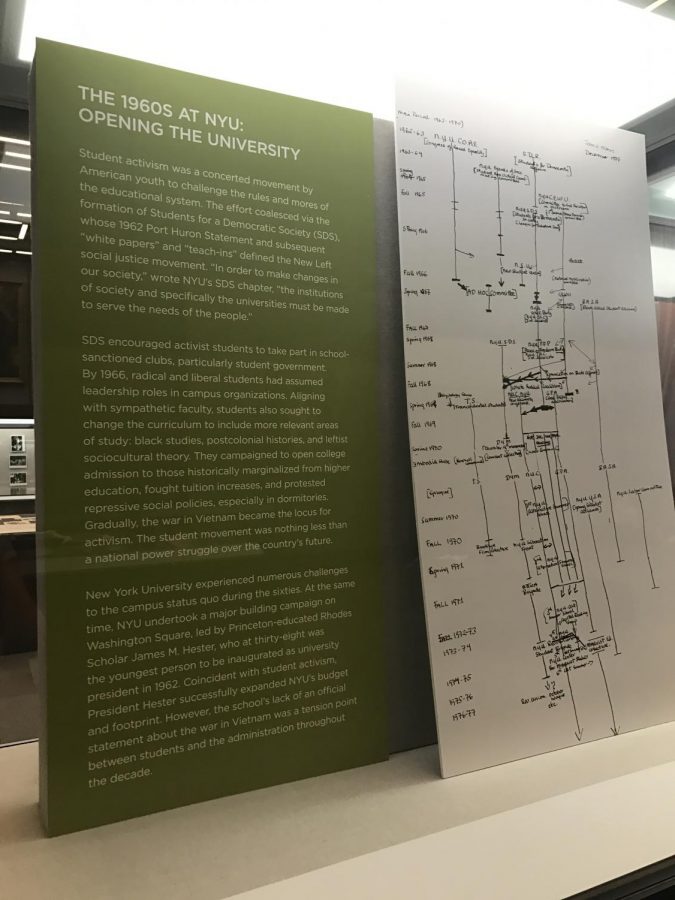Bobst Exhibits History of Political Activism at NYU
A display for “Narrative and Counter-Narrative: (Re)defining the 1960’s,” an exhibit in the Mamdouha Gallery in Bobst, running through through May 16. The exhibit features artifacts from revolutions that occurred on the NYU campus throughout the ‘60s.
February 26, 2018
Revolutions are needed just as much now as they were in the ’60s. With Parkland vigils, Black Lives Matter and LGBTQ+ support seminars happening daily, there are noticeable parallels between today and NYU’s storied history of protests against discrimination and violence.
Running at the Mamdouha Gallery in Elmer Holmes Bobst Library through May 16, “Narrative and Counternarrative: (Re)defining the 1960’s” houses stories, photographs and mementos from the various revolutions that occurred on NYU’s campus throughout the ’60s. As our generation moves forward with revolutions of our own, the exhibit reflects on the battles that came before us.
The gay liberation movement, in particular, is prevalent throughout the exhibit’s walls. With the Stonewall Inn just blocks away, students at the time could not help but be affected by the riots of 1969.
In reaction to the police raids and protests at the historical landmark, the NYU community at the time took it upon itself to form its own uprisings — even ones taking place outside Weinstein Residence Hall.
Jim Fouratt, a former member of Students for a Democratic Society at NYU during the Gay Liberation Front, even helped organize a Stonewall anniversary parade that marched pridefully through campus, according to the exhibit.
The exhibit’s focus on the National Student Strike in 1970 resonated with the nationwide walkouts currently happening in response to school shootings and debates over gun control.
As a result of the police attacks against student protests at Kent State University in 1970, the NYU Law School agreed to cancel all classes on May 7 of that year and devote the day to anti-war demonstrations.
This became one of the largest student strikes in United States history, with buildings around campus blanketed with students’ flyers demanding change. With a vigil held in the Kimmel Center for University Life last Thursday for the victims of the Parkland School shooting, our campus is beginning to look more and more like 1960s wartime America.
Another pivotal movement of the ’60s was the Civil Rights Movement. NYU had good relations with various civil rights organizations at the time and supported student-run protests, but as long as they occurred off-campus, according to the exhibit.
Through the university, a storefront was opened on East Fourth Street that served as a tutoring center and space to organize strikes and movements. Other student efforts did not fare as well and were disrupted by police –– an occurrence still prevalent today.
“Narrative and Counternarrative: (Re)defining the 1960s” is a strong reminder of the power of students and how much influence campus activism can have on the world. As our community moves forward, we must recognize and remember those who came before us and began the fights we are continuing to this day.
A version of this article appeared in the Feb. 26 print edition. Email Julia Fields at [email protected].
























































































































































